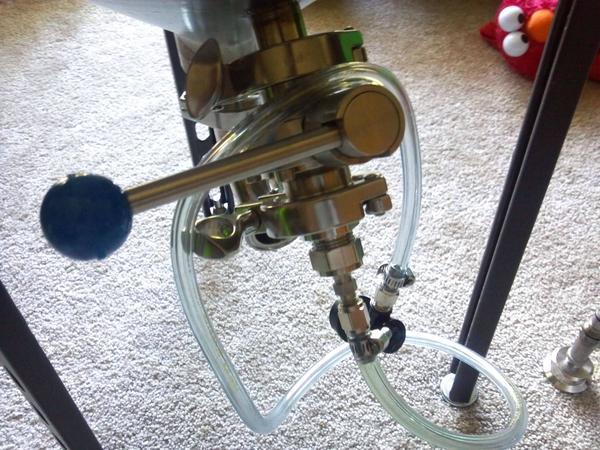First pressure ferment. On this prv, I found that 3 full turns was a bit over 5psi, and 5 turns a bit over 10psi. 18gal of oatmeal stout in there. Chuggin along at 63.7degF and 10psi.
The valve and flare fitting will allow me to keep some pressure on the fermenter when transferring under pressure, which I think I'll have to do, although I have no experience with that. The ball valve/mfl seem like a more robust setup than having a corny post and qd, which seems redundant to me if you have an mfl on the qd anyways.
I just have the tubing on there temporarily to check the bubbling action - not worried about having an airlock with the spund setup. I am curious about sanitation in between uses though. Although beer doesn't touch the valve components directly, condensation dripping back into the beer would seem to me to be just as bad. Maybe a couple of squirts pbw, then water, and starsan right before using. I don't think I can immerse the whole thing in a bucket because of the pressure gauge. Lots of crevices with all the pipe fittings....















![Craft A Brew - Safale S-04 Dry Yeast - Fermentis - English Ale Dry Yeast - For English and American Ales and Hard Apple Ciders - Ingredients for Home Brewing - Beer Making Supplies - [1 Pack]](https://m.media-amazon.com/images/I/41fVGNh6JfL._SL500_.jpg)













































